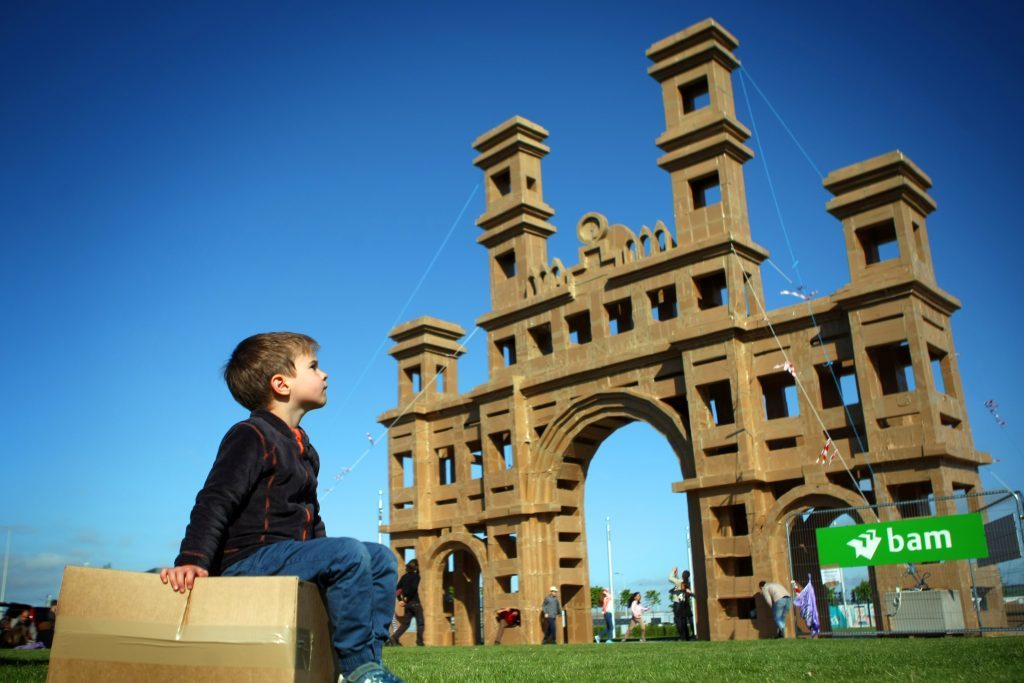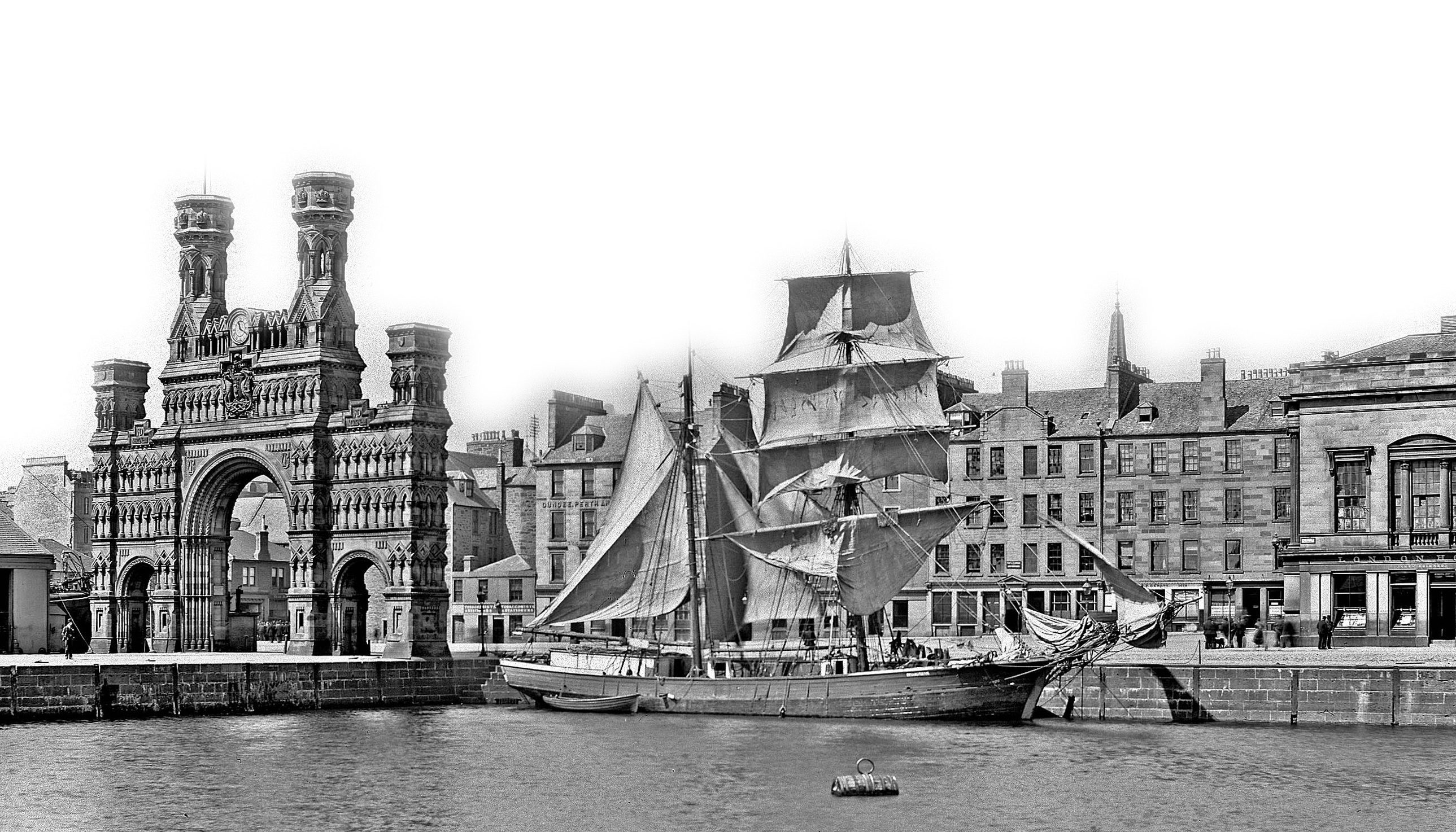The temporary resurrection of the Royal Arch (that’s the actual arch as opposed to the pub in Broughty Ferry) was an ingenious wheeze, albeit one that smacked ever so slightly of the sins of the great-grandfathers being visited on the great-grandsons and great-grand daughters.
I confess to a momentary shudder of doleful recognition as the cardboard box replica was heaved up to its full height, and that awful profile cast its shadow on Dundee soil once more, and for the first time in more than 50 years.

The trouble is that those in the crowd who had the great good fortune to be too young to have seen the brutish original, might have watched that featherweight, sun-tanned, frivolous and airy structure metamorphose before their eyes and thought it a thing worth rebuilding for real. Why not?
The same thought, or something very like it, might also have crossed the minds of a few delusional, nostalgia-smitten souls of a certain age who think that the waterfront redevelopment and all it stands for is proof beyond doubt that for Dundee, the golden age ended the day before yesterday.
Permit me to tell it like it was.
The Vicky Arch was the ultimate definition of the word “folly”, and in every sense of that unhappy word. Of all the grotesqueries ever inflicted on our royal family’s long-suffering subjects in the name of our long-suffering royal family, the Vicky Arch was the grotesquest, and I will worry some other time about whether that is a word or not. It is certainly a supremely ugly word, and therefore fits the bill perfectly.
Actually, it was built twice, once in wood, and then in sandstone. Both were equally grotesque. But the stone one that glowered over the city for a hundred years was not frivolous and airy, it was a brute.
The Vicky Arch was bombarded with filth from the outset. It was at once a huge, free-standing pigeon loft, the like of which Dundee’s Victoria pigeons had never dared to dream. Their descendants rather took it for granted and turned it into a high-rise pigeon slum. I leave to your imagination the consequences of the accumulated tons of unspeakable free-form excremental decoration that implies.
The Vicky Arch was also mired from below. The decision to route a steady trundle of scruffy little steam-train pugs through the arch and in and out of the docks, blasted clouds of grey grubbiness all over the hem of Vicky’s skirts all day long.
The whole wretched edifice was hoisted into the air at a time when Dundee’s industrial boom announced itself through hundreds of factory chimneys. So the Vicky Arch quickly became – and remained throughout its existence – a vilely besmirched shade of black.
Its nearest neighbours were the Empress Ballroom, a dock warehouse, a strange little shack that might have been a dockers’ toilet, a sand dredger and its associated procession of trucks, and the corporation bus station across the street. The degrees of folly that attended the beast throughout its life were limitless.
As for the monarch whose name it was built to dignify, one can only imagine that we were not amused. It is hard to envisage a more unregal memorial anywhere in the land. In 1964, dynamite put us all out of our misery and the stones were drowned in the docks. Like that other unhappy monarch, Claudius, it was killed twice.
So the 2016 remake in its wide open grassland setting at least had an aesthetic element that was utterly absent from the original. But apart from providing a novel way of spending a bank holiday weekend, the exercise told us three things about our redevolping waterfront.
One is that the setting works well as a public open space, and as long as it is not lined on two sides with office blocks or flats of unworthily bland design, it should continue to work well.
The second is that Dundee will have to do something about the south elevation of the Caird Hall which suddenly has a much more prominent role in the city’s central landscape than was ever intended. Caird’s instruction to architect James Thomson was to build something that outwardly resembled a jute mill. Alas, the view of it from the south does just that.
The third is that I can see an important future role for cardboard boxes in urban planning. In order to spare the city from further architectural outrage, planning law should be amended so that a full-size cardboard box model should be constructed in a public space so that we can all look at it. Citizens should be encouraged to bring along their own boxes and sticky tape to demonstrate alterations, improvements, extensions; and a box of matches and a bottle of paraffin if they don’t like what they see.
Finally, one hundred and sixty years after work began, Dundee would inherit a worthwhile legacy from the Vicky Arch.










